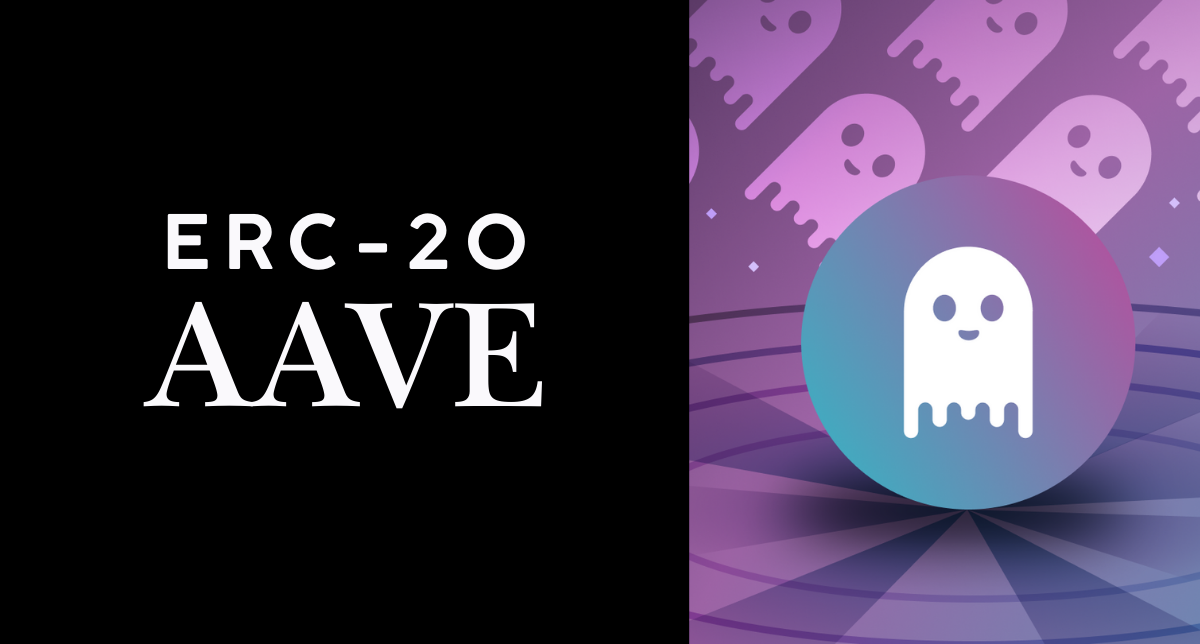In the rapidly expanding world of decentralized finance (DeFi), Aave has emerged as a popular protocol for lending and borrowing cryptocurrencies. As part of the DeFi ecosystem, Aave offers a trustless, transparent, and open financial system, enabling users to engage in peer-to-peer lending and borrowing directly through blockchain technology. If you’re new to Aave or DeFi in general, this article will break down everything you need to know about this innovative platform: what it is, how it works, its benefits, and its significance in the DeFi landscape.
Introduction to Aave
Aave is a decentralized, non-custodial liquidity protocol that allows users to lend and borrow cryptocurrencies without needing a centralized intermediary, such as a bank or financial institution. Founded in 2017 by Stani Kulechov, Aave initially launched as ETHLend, a peer-to-peer lending service on the Ethereum blockchain. In 2020, the platform rebranded to Aave (which means “ghost” in Finnish) and transitioned to a liquidity pool model, which has since garnered widespread popularity among DeFi users and investors.
Unlike traditional financial systems, Aave operates through smart contracts on the Ethereum blockchain, enabling transparency and removing the need for intermediaries. This means users can lend or borrow assets directly from each other with lower fees, less friction, and faster processing times than those associated with traditional banks.
How Does Aave Work?
Aave operates on a liquidity pool model. Rather than connecting individual lenders and borrowers directly, Aave pools assets into smart contracts that both parties interact with. Here’s how Aave works in a few key steps:
- Lending: Users deposit their cryptocurrency into Aave’s liquidity pools. By doing so, they make these assets available to other users who may want to borrow them. In return for lending, they earn interest paid by borrowers and receive aTokens, which represent their stake in the liquidity pool and accrue interest over time.
- Borrowing: To borrow from Aave, users must deposit collateral, typically a higher value than the amount they wish to borrow (known as over-collateralization). This collateral protects the system from defaults and helps maintain liquidity. Borrowers can choose between stable or variable interest rates, giving them flexibility based on their financial strategies.
- Interest Rates: Aave offers both stable and variable interest rate options for borrowers. The interest rate fluctuates based on supply and demand in the liquidity pool. A stable rate is less volatile and is ideal for users who want to predict borrowing costs, whereas the variable rate adjusts based on real-time market conditions.
- Flash Loans: One of Aave’s most unique features is flash loans, a type of uncollateralized loan that must be repaid within a single transaction. This innovation is aimed at developers and advanced users, enabling arbitrage, collateral swapping, and refinancing opportunities. Flash loans are highly popular among traders due to their instant nature, though they require technical expertise to execute.
Key Features of Aave
Aave offers several features that set it apart from other DeFi lending platforms:
- aTokens: When users deposit assets into Aave’s liquidity pools, they receive aTokens, which represent the deposited asset and accumulate interest over time. For example, depositing DAI will earn users aDAI tokens, which increase in value as interest accrues.
- Collateral Swaps: Aave allows users to swap the collateral they’ve deposited, making it easier to adjust positions in response to market changes without exiting the platform.
- Interest Rate Switching: Borrowers on Aave can switch between stable and variable interest rates at any time, providing flexibility based on individual preferences and market conditions.
- Flash Loans: These innovative loans allow users to borrow without collateral, provided they can repay within a single transaction. Flash loans are particularly popular for arbitrage and on-chain trading strategies, though they require specialized knowledge to use effectively.
- AAVE Token: Aave has its own governance token, AAVE, which serves multiple purposes. AAVE token holders can participate in protocol governance, propose upgrades, and vote on key decisions affecting the platform. Additionally, holding AAVE allows users to access reduced fees and other benefits.
The Role of the AAVE Token
The AAVE token plays a significant role within the Aave ecosystem, providing utility and governance functions. Here are some of the key uses of the AAVE token:
- Governance: AAVE token holders can participate in decision-making processes, including voting on protocol upgrades and proposals for new features or asset listings.
- Fee Reduction: By holding AAVE, users can enjoy reduced fees on the platform, providing incentives for frequent users.
- Safety Module: The Safety Module is a unique feature where AAVE holders can stake their tokens as a form of insurance against any potential shortfall events. In return, they earn additional rewards, adding a layer of security to the ecosystem.
- Incentives and Rewards: Users who stake AAVE in the Safety Module are eligible for rewards in the form of additional AAVE tokens, making it an attractive option for those looking to earn passive income while supporting the platform’s stability.
Benefits of Aave
Aave brings a range of benefits to both individual users and the broader financial ecosystem. Here are some of the key advantages:
- Transparency and Trustlessness: Built on blockchain technology, Aave operates on a transparent system where transactions are public and verifiable. This reduces reliance on centralized entities and increases user trust.
- Decentralized Governance: Unlike traditional financial systems, Aave is governed by its community of token holders, allowing them to have a say in the platform’s direction and future developments.
- Flexibility for Borrowers and Lenders: Aave offers both stable and variable interest rates, along with collateral swapping options, enabling users to manage their financial positions effectively based on their risk tolerance and goals.
- Lower Costs and Accessibility: With no intermediaries, Aave offers lower fees than traditional lending platforms. Additionally, it’s accessible to anyone with an internet connection, enabling financial inclusion for people who might otherwise lack access to traditional banking.
- Yield Generation: By lending assets on Aave, users can earn a passive income, as the platform generates yield through interest paid by borrowers. This makes it an attractive option for investors looking to diversify their portfolios.
- Innovation with Flash Loans: Flash loans offer unparalleled financial tools for arbitrage and other on-chain operations, allowing users to profit from market inefficiencies without requiring collateral.
Risks Associated with Aave
While Aave has many benefits, it’s important to understand the potential risks involved:
- Smart Contract Vulnerabilities: Since Aave operates on smart contracts, there’s a risk of bugs or vulnerabilities that could be exploited by bad actors. Although Aave’s contracts are audited, no system is completely immune to risk.
- Market Volatility: The cryptocurrency market is notoriously volatile, and this can affect collateral values, interest rates, and the stability of loans. For example, if the value of a borrower’s collateral drops significantly, they risk liquidation.
- Regulatory Uncertainty: DeFi is still a relatively new sector, and regulatory frameworks are still evolving. Changes in regulations could impact the accessibility and functioning of platforms like Aave.
- Liquidation Risks: If the value of a user’s collateral drops below the required threshold, it may be liquidated to protect the platform’s solvency. This is a risk that borrowers need to consider carefully, especially in volatile markets.
How to Get Started on Aave
Getting started on Aave is relatively straightforward. Here’s a step-by-step guide:
- Create a Wallet: First, users need a compatible wallet, such as MetaMask or WalletConnect, to interact with Aave’s platform. This wallet will store your assets and connect you to the protocol.
- Deposit Assets: Once your wallet is set up, deposit your chosen assets into Aave’s liquidity pools to start earning interest or to have the option to borrow.
- Borrow or Earn: Depending on your goals, you can either borrow against your collateral or simply earn passive income from your deposits.
- Manage Your Positions: Through Aave’s interface, you can monitor your balance, switch interest rates, or adjust your collateral as needed to optimize your returns.
Conclusion: The Future of Aave and DeFi
Aave has established itself as a cornerstone in the DeFi space, bringing a revolutionary approach to lending and borrowing. By enabling users to interact directly with liquidity pools through smart contracts, Aave exemplifies the potential of decentralized finance to create a more open, transparent, and accessible financial system. Despite the risks, the platform’s continuous innovation, robust security measures, and active governance community contribute to its resilience and ongoing growth.
For users and investors alike, Aave offers compelling tools for financial management, including yield generation, decentralized governance, and cutting-edge solutions like flash loans. As DeFi continues to grow, Aave remains at the forefront, pushing boundaries and setting standards for what decentralized finance can achieve.

A.k.a – alpha girl. Vinita is the founder of Alphachaincrypto. An English Lit Majors, Vinita bumped into Web3 in 2020 only to realise that tech was her calling. Later, Mathreja worked for some notable brands like Near Education, Biconomy, CoinDCX and top of the line crypto start ups.





